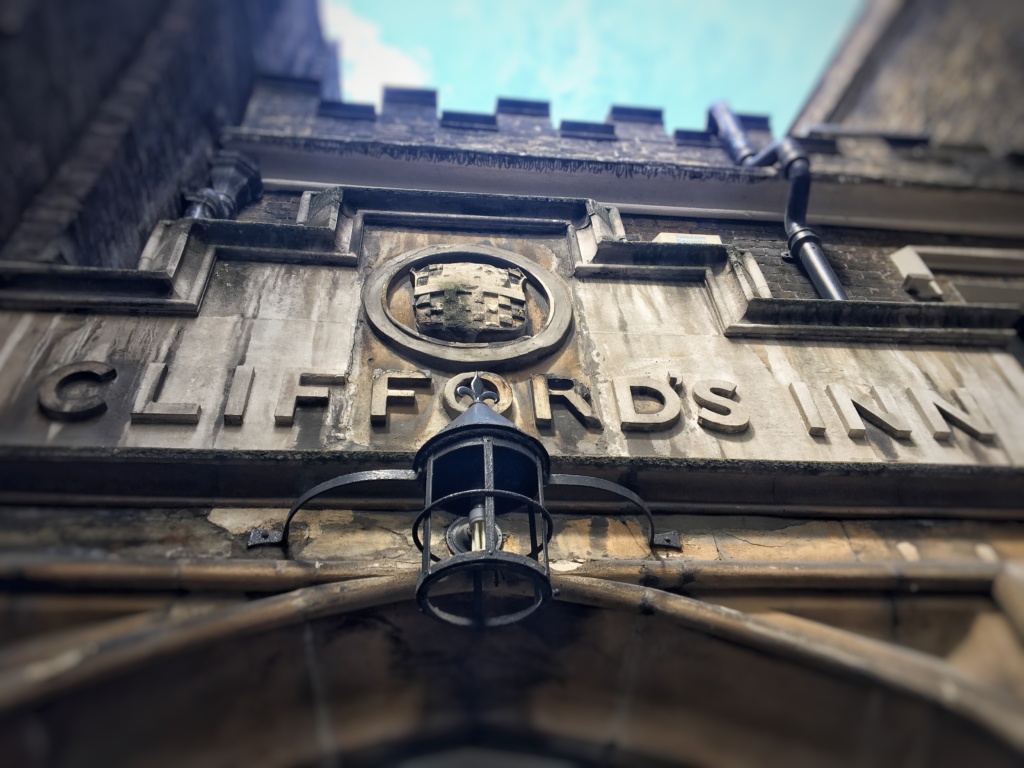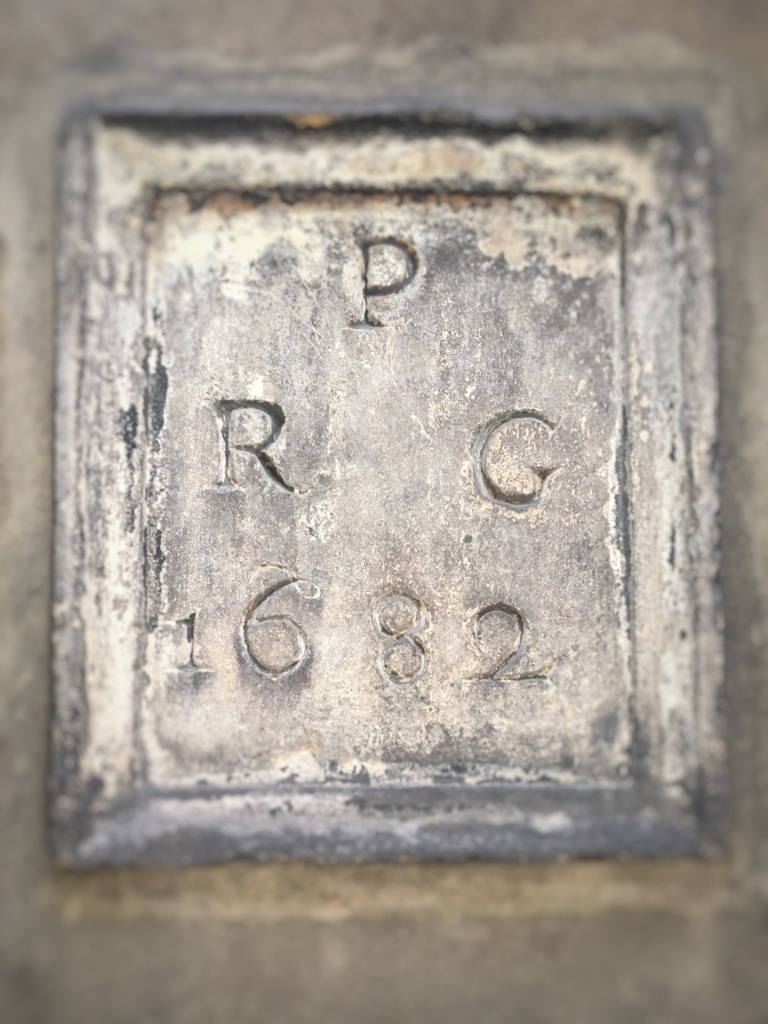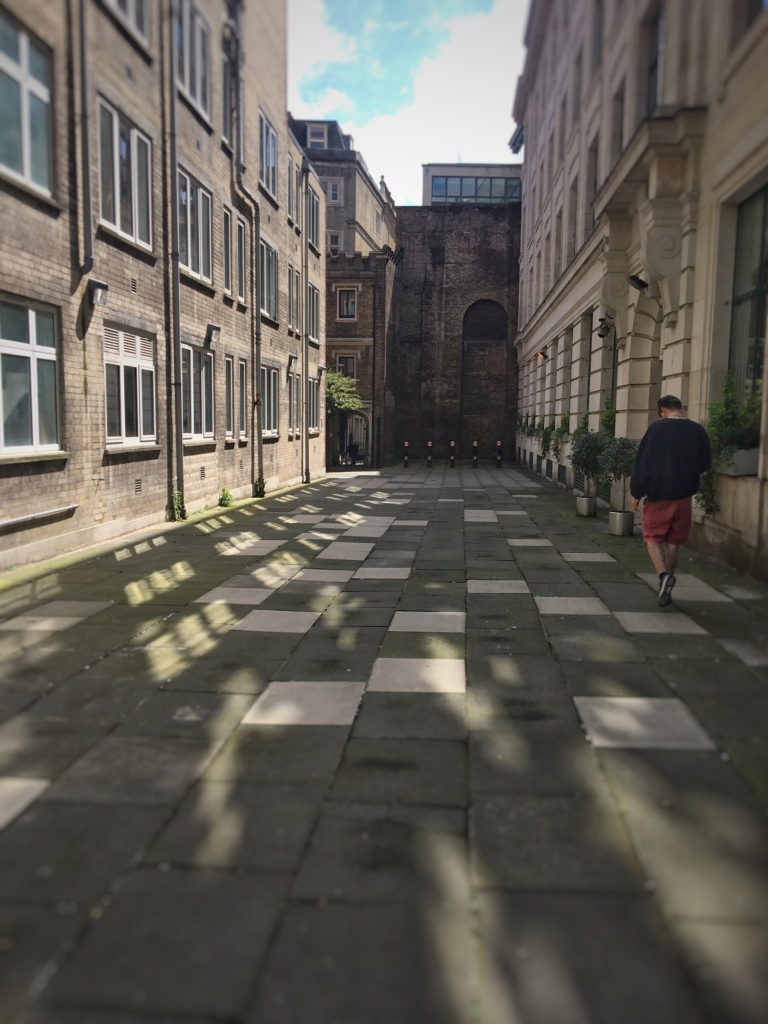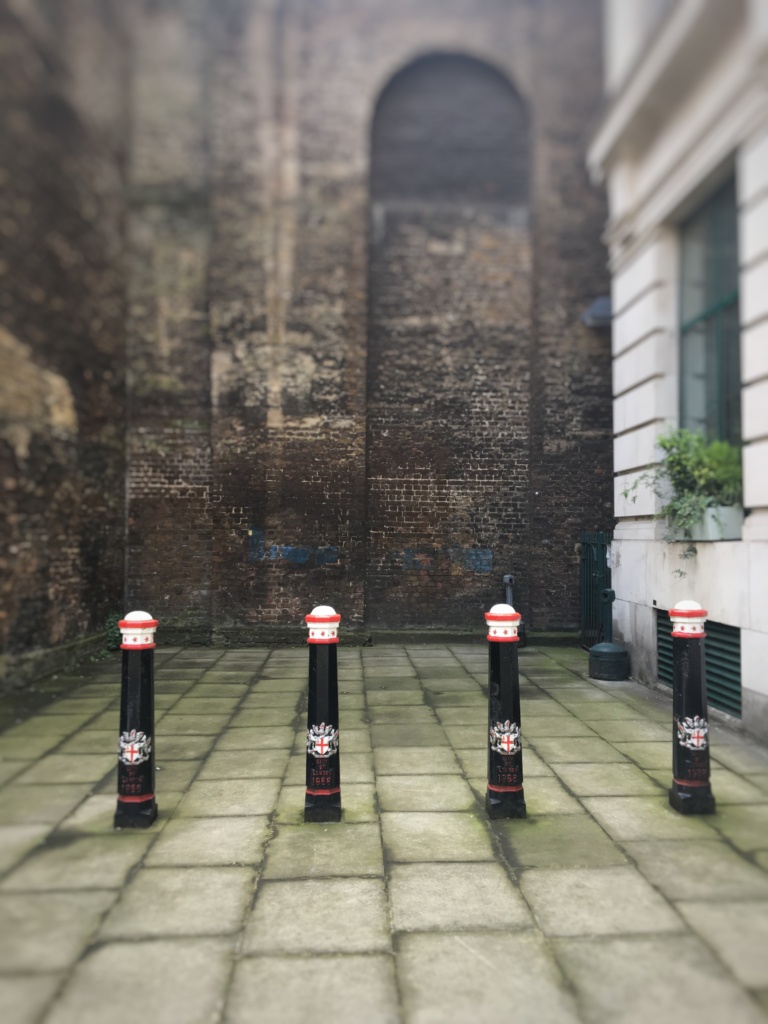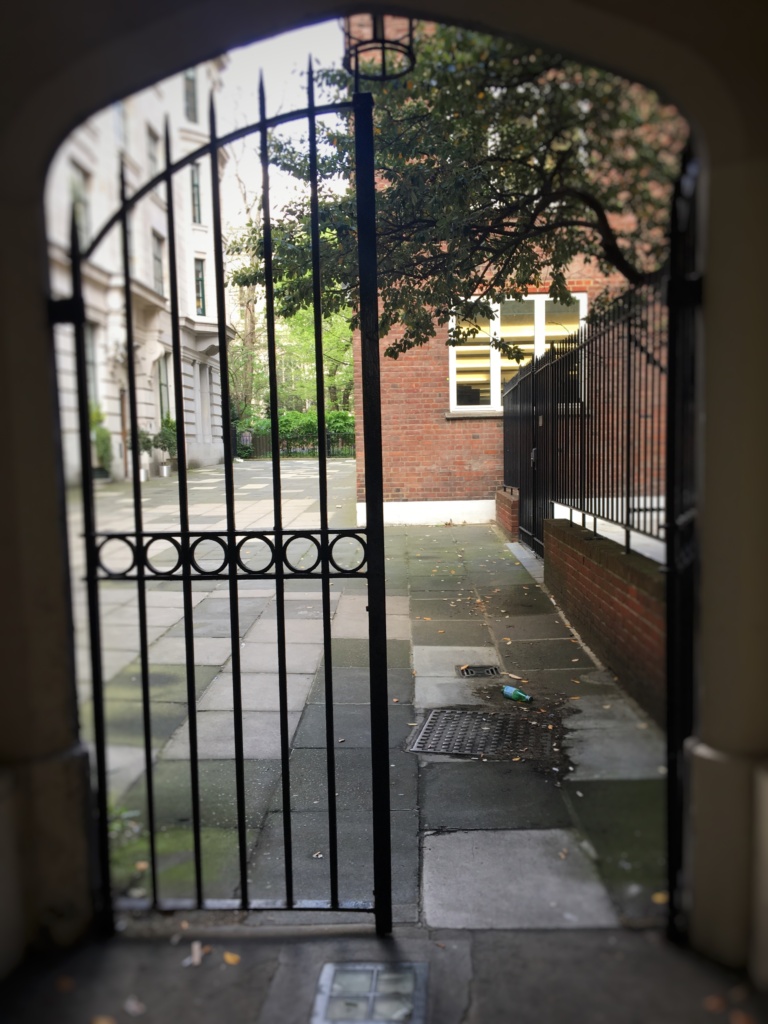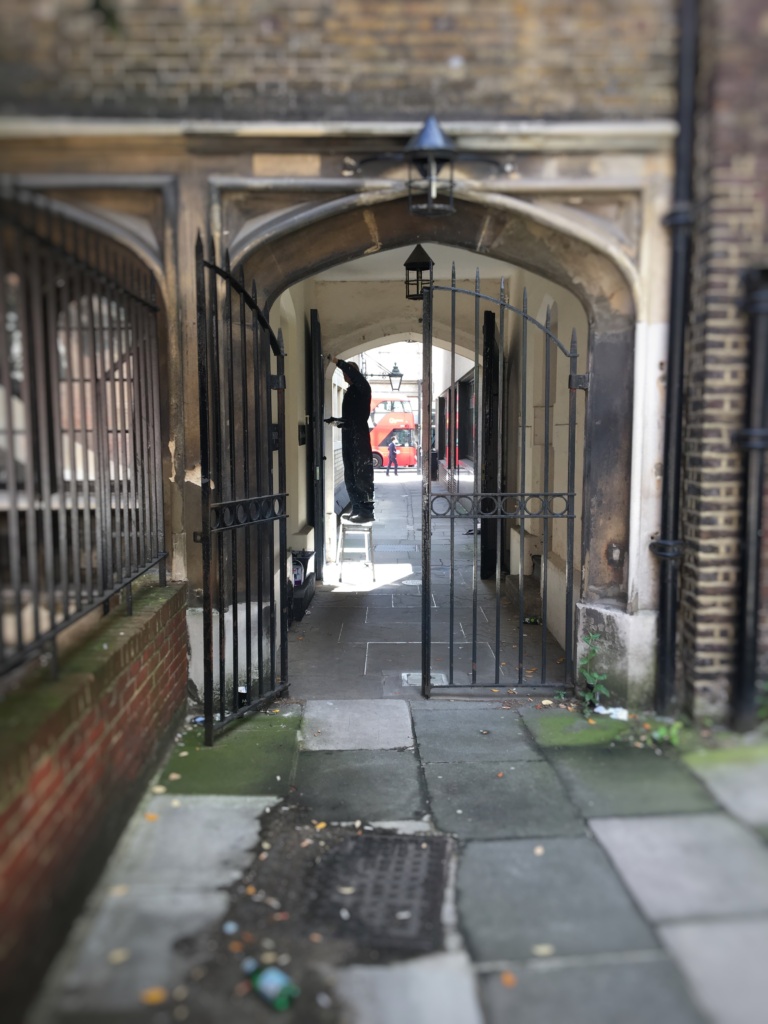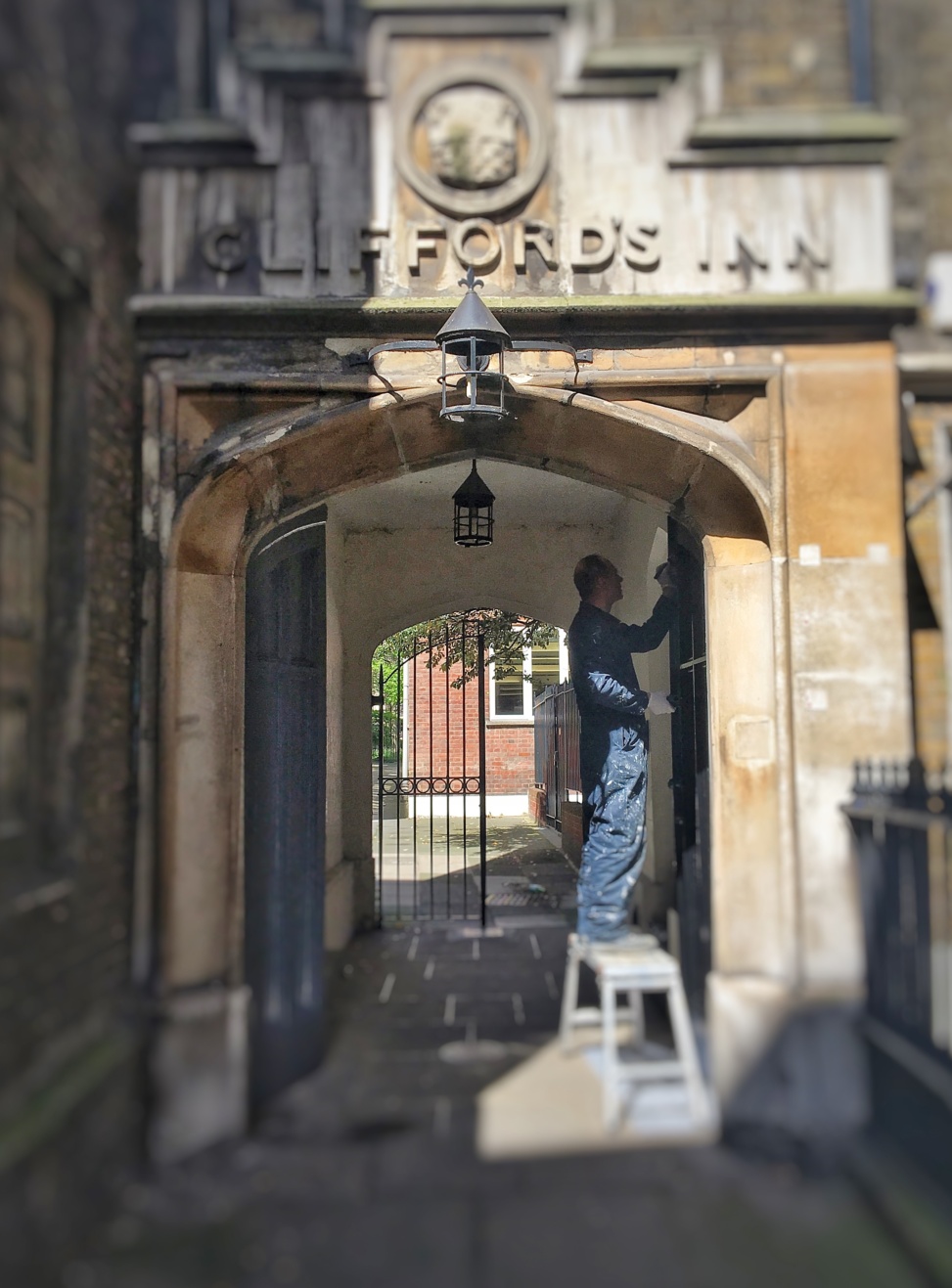All that remains of Clifford’s Inn, the Inn of Chancery that was founded in 1344 and dissolved in 1903, is this solitary gate in Clifford’s Inn Passage. The rest of the magnificent building was knocked down in 1934. This gatehouse is not a particularly ancient part of the Inn, having only been added in the 1830’s, still it is all we have to remember the Inn and must do for us. As part of my effort to seek out all remaining legal Inns, I had to visit and tick it off my list.
I arrived from Chancery Lane and turned the passage to find what appeared to be a dead end. Facing me was a brick wall fenced off by a line of City of London bollards standing sentry before it. But in the left hand corner was a small turreted building that turned out to be the gatehouse I was looking for. Unless forewarned you would struggle to realise its significance. There was a chap up a ladder giving the inside walls of the gate a lick of paint and he hadn’t a clue what Clifford’s Inn had been. In fact “haven’t a clue, mate” were his very words. “Never mind,” I replied as I proceeded to tell him all about it. It was his lucky day – although he didn’t seem that pleased nor at all interested with my potted history. Poor bloke. He’d probably been happy as a sandboy minding his own business slapping on a coat of paint or two until I turned up. I can be quite a bore about these things, I know.
When you go through the gate and see it from the Fleet Street entrance you get more of a sense of occasion. There is a grand stone sign above the gate which proclaims “Clifford’s Inn”. There are also three stones with initials and dates from the seventeenth century engraved in them. And to be honest, that is about it. There isn’t much to see here. But it is reassuring that some of the lost world of Clifford’s Inn remains if only to hint at what had been.
